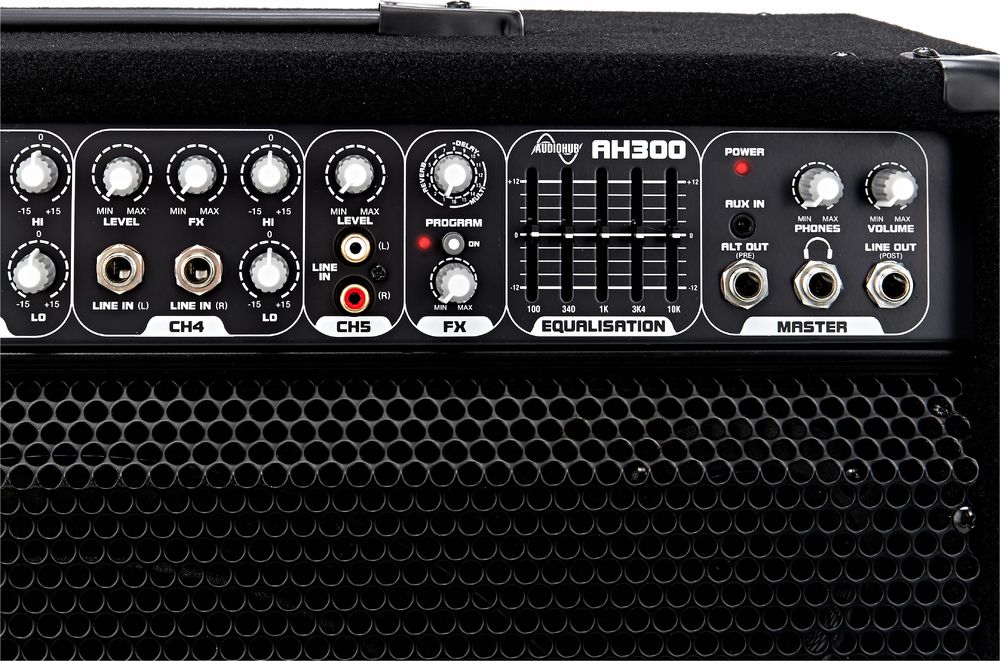4. Channels, EQ and Effects

Cannel 4 and Master Section from Laney AH300
Channels
The bulk of keyboard amps are made with three or four channels, allowing a corresponding number of instruments to be connected and independently controlled. In some cases this saves the trouble of an additional mixer. Many amps also have a channel for connecting a dynamic microphone, useful for an entertainer because you don’t need a separate PA system. It’s also possible to connect a typical CD or MP3 player here, just check how and if these aux sources are volume controlled, manufacturers vary a lot on this.
EQ
Less flexible and variable is the EQ. Many amps stick to the widely known 3 band EQ, ideally this can be switched and applied to the individual channels. This makes sense if, for example, just the stage piano’s signal should be corrected and not the entertainers mic. Some models offer a 5 or 7 band graffic equalizer, which offers better control and can be switched between the individual channels. But considering most electronic keyboard instruments offer sound correction themselves, it isn’t an essential feature for an amp.
Effects
Keyboard amps are usually produced with an integrated effects device, usually with the standards like chorus, flanging, rotary and hall included. There are some models though that have a wide variety of FX to offer. Whether or not you need an included effects section in your amp is debatable. The majority of keyboard instruments come with most effects included and doubling up doesn’t usually produce pleasing results. If, however, you have a classic electric piano like a Rhodes, or an organ that doesn’t have its own built in effects, it may be useful to have them on your amp. You can even use keyboard amps with built in effects to boost the sound of an acoustic guitar, something many find useful.


